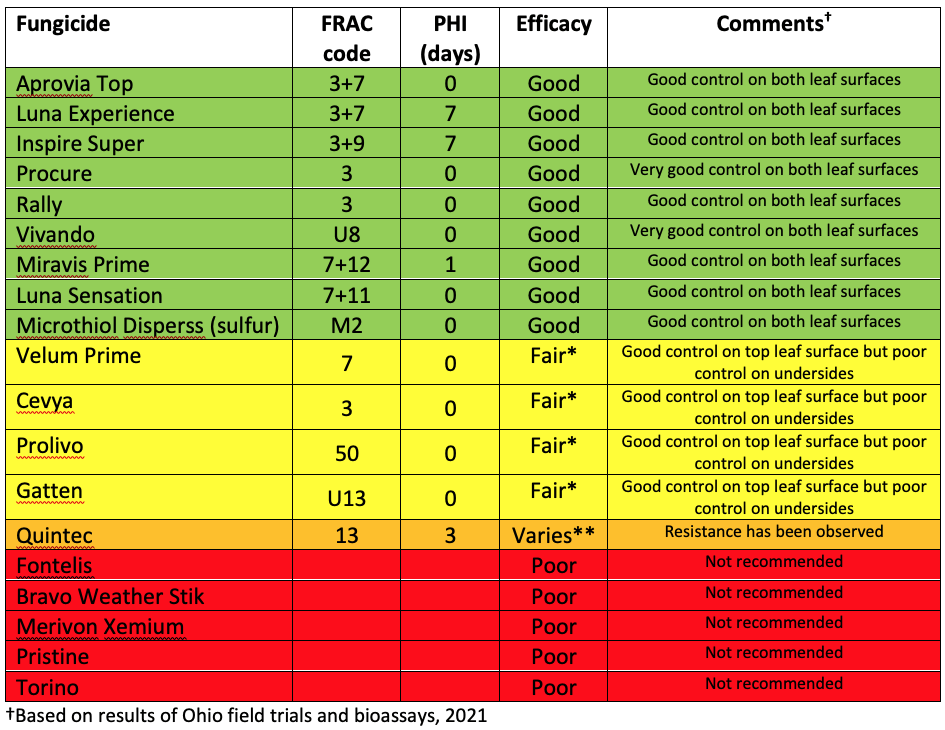Downy mildew was reported on cucumbers in NE Ohio (Medina and Wayne counties) and southern Ontario last week, suggesting widespread occurrence possible in northern Ohio. This morning Marty Hofbauer, CCA and Agronomist at Luckey Farmers, Inc., discovered downy mildew in fresh market cucumbers near Tiffin, Ohio in Seneca County. Marty sent me excellent photos of leaf lesions taken with his smartphone that allowed me to confirm downy mildew without the need to send in a sample. By taking the pictures early in the morning, the sporulation on the undersides of leaves was clearly visible in young lesions. Sometime about mid-late morning the sporangia will be discharged. Older lesions tend to dry out and are not necessarily diagnostic for downy mildew. Several of his pictures are included here as examples of what to look for. Angular leaf spot, caused by a bacterium, also makes angular lesions, but the grey fuzzy growth and black dots (sporangia) on the lower side of the lesion is diagnostic for downy mildew.

Underside of cucumber downy mildew lesion showing sporulation of the pathogen. Photo by Marty Bauer.
I continue to be amazed at the increasingly high quality and resolution of smartphone images. For a disease like downy mildew, where quick diagnosis and treatment is crucial, taking high high quality pictures that can be sent to us for confirmation saves both time and money. Ohio cucurbit growers, consultants and others may send me pictures such as these by text (330-466-5249) or email (miller.769@osu.edu) for diagnosis. Physical samples may be sent to Dr. Francesca Rotondo in the OSU Vegetable Pathology Lab – see submission instructions here. Vegetable and fruit diagnostics are free to Ohio growers due to financial support from the Ohio Produce Growers and Marketers Association’s Ohio Vegetable and Small Fruit Research and Development Program.




















